
Success in the gym is not only measured by the intensity of your workouts, but also by the quality of your rest. Both recovery time between sets and between training days are crucial for muscle recovery and optimal performance.
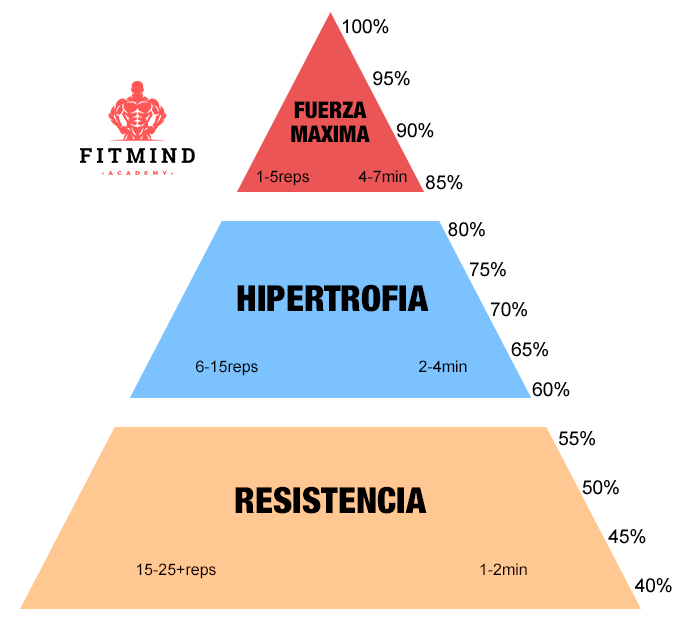
Rest between training days is vital to allow muscle recovery and prevent overtraining. The National Strength and Conditioning Association (NSCA) advises a 48-72 hour rest between intense sessions for specific muscle groups.
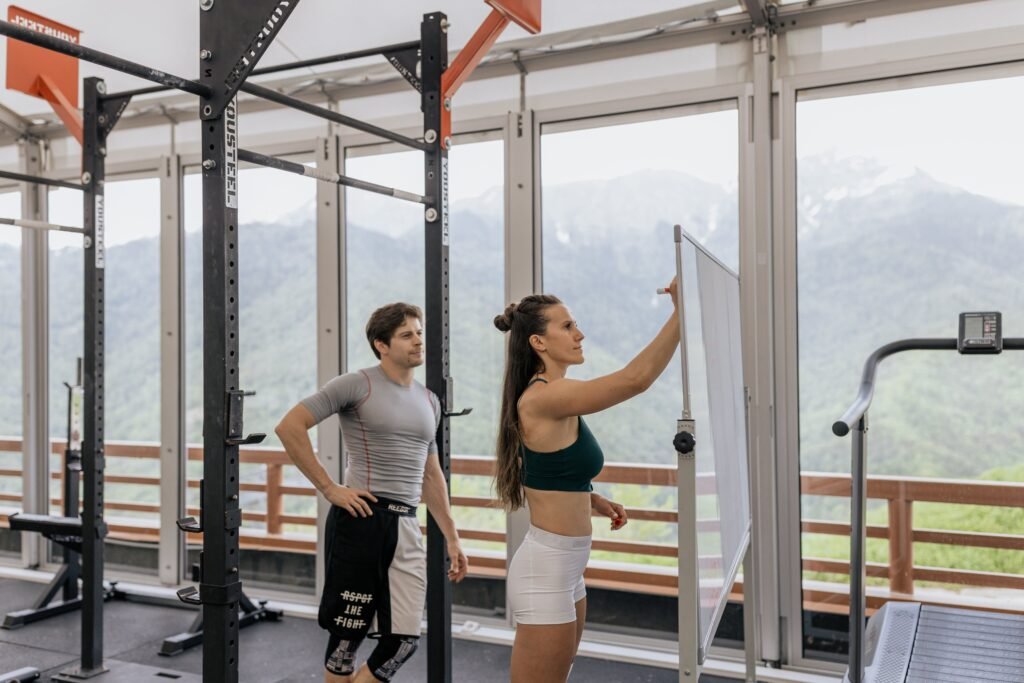
The supercompensation curve is a concept that describes how the body adapts to the stress of exercise. After an intensive training phase, the body enters a recovery phase where its performance capacity improves. Understanding this curve is crucial to optimally program training and rest.
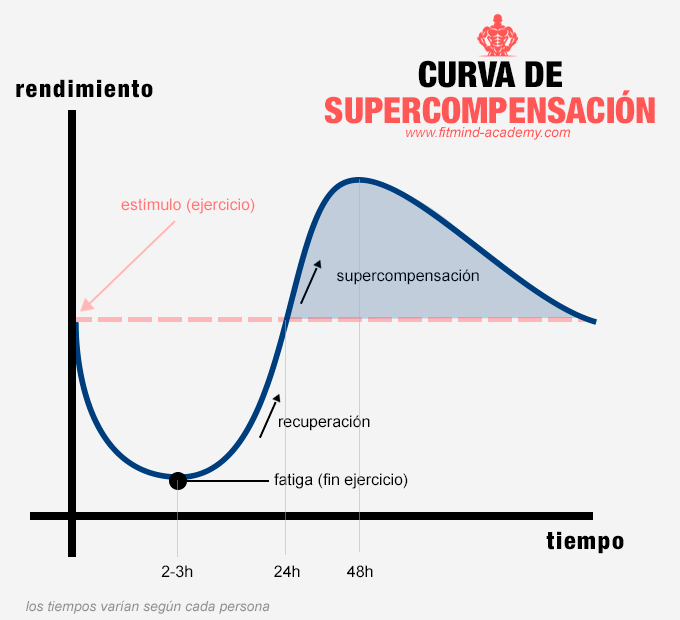
I will try to explain this graph in the most summarized way possible. If you look closely if the curve goes down is because our performance is decreasing and if it goes up is increasing performance (blue curve).
This performance is affected by a stimulus that in our case will be any exercise (gym training) or any other stimulus that fatigues the muscles. After 2-3 hours of training our performance will decrease due to the fatigue that this generated.
It is essential to let the recovery have enough time to reach a base state as in the beginning (in the graph is represented in 24h in the timeline). Of course, it should be noted that this varies according to the level of each person, since a more trained person can recover faster.
Once our supercompensation reaches the top (48 hours on the timeline) the ideal is to trigger a stimulus again in order to grow the performance curve from that point.
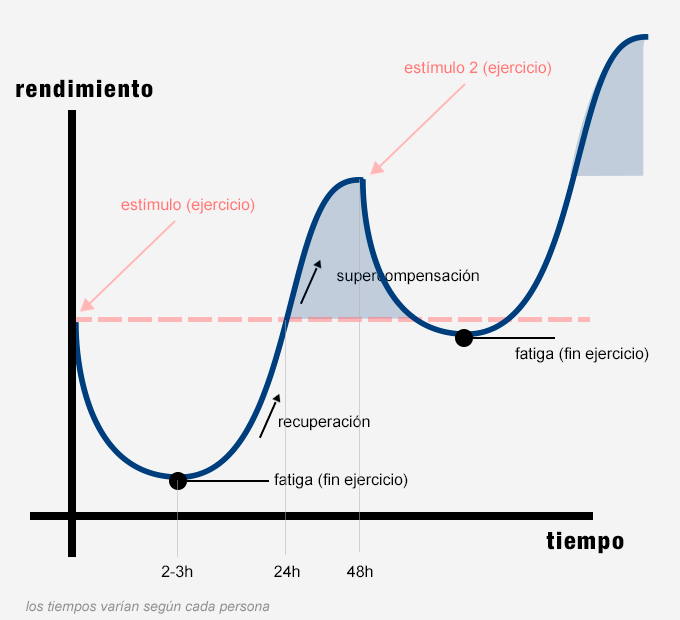
As you can see, if we maintain an adequate recovery time and apply a new exercise (or training day) after a correct time the supercompensation curve will increase more and more.
Poor rest management can lead to a state of overtraining. A study from the University of Jyväskylä showed that athletes who did not respect adequate rest periods experienced decreased performance and symptoms of prolonged fatigue.
Sleep deprivation can have a significant impact on muscle growth. A study in the Journal of Clinical Endocrinology & Metabolism showed that lack of sleep can decrease muscle protein synthesis, essential for muscle growth and repair.
The Supercompensation curve can give you a clear idea of why performance will decline if you allow little recovery time between training days:
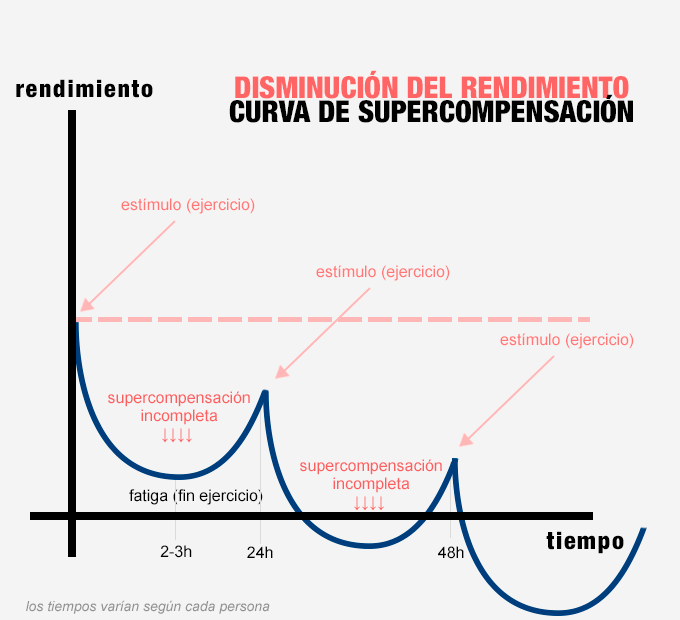
For this reason, exercises performed one day after the other have no results, for example, the challenges of “doing 100 push-ups a day” or training the biceps from Monday to Friday will only hinder your results.
Mainly you have to be patient since a good muscle growth needs an ideal recovery both between sets and between days. Other things to also improve to increase your muscularity during recovery is:
Rest and recovery are as important as the training itself in achieving success in the gym. Understanding how long to rest between sets and days, and how the supercompensation curve influences your training, will allow you to maximize your results.
In addition, getting adequate sleep and following effective muscle recovery practices are essential to maintaining a healthy body and achieving your fitness goals. Remember, the key to training success is not only how hard you work, but also how much you rest. If you need help you can hire the online consulting service.

Bachelor of Sports Science
Personal Trainer - Fitmind Academy